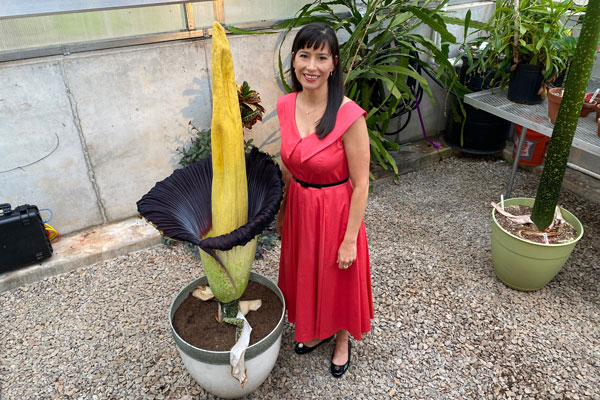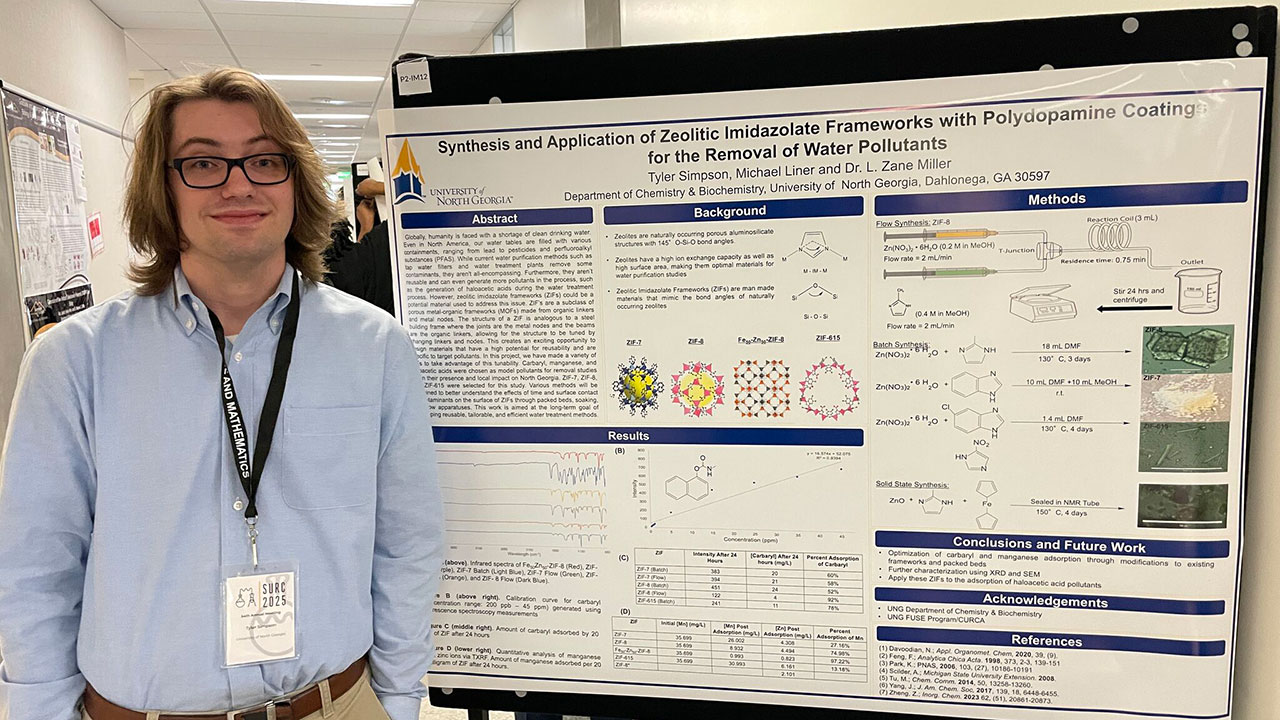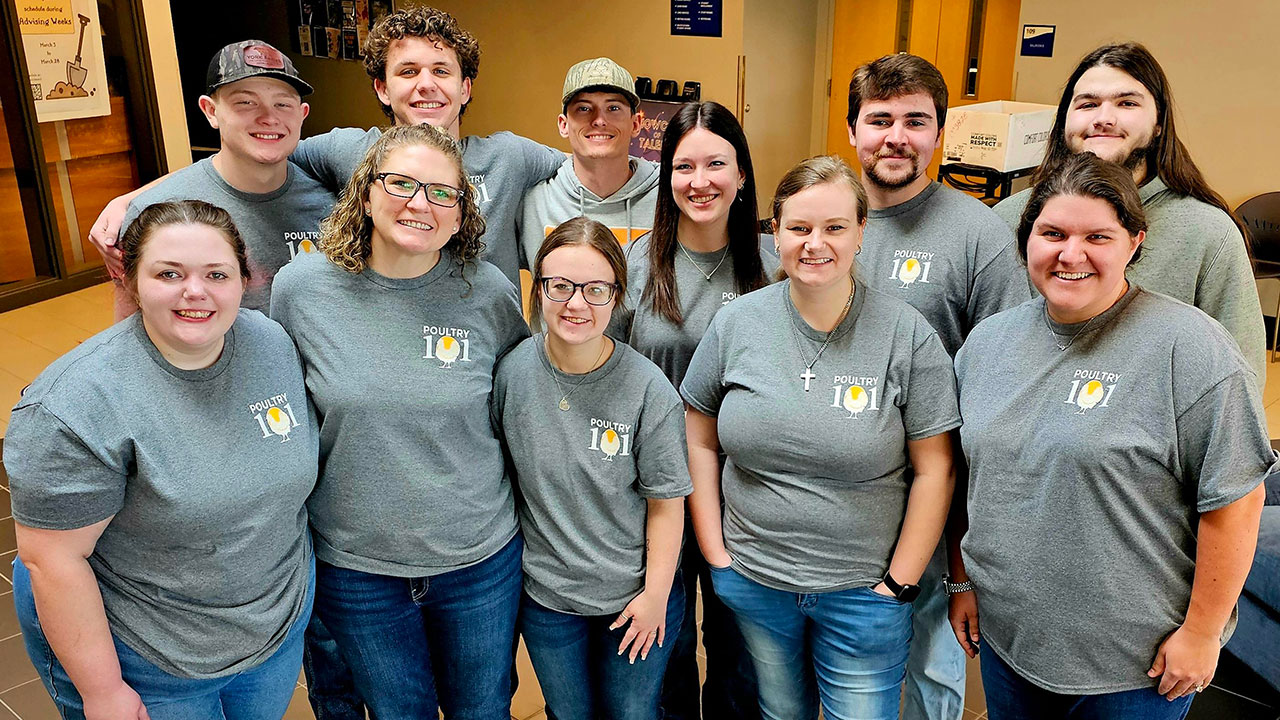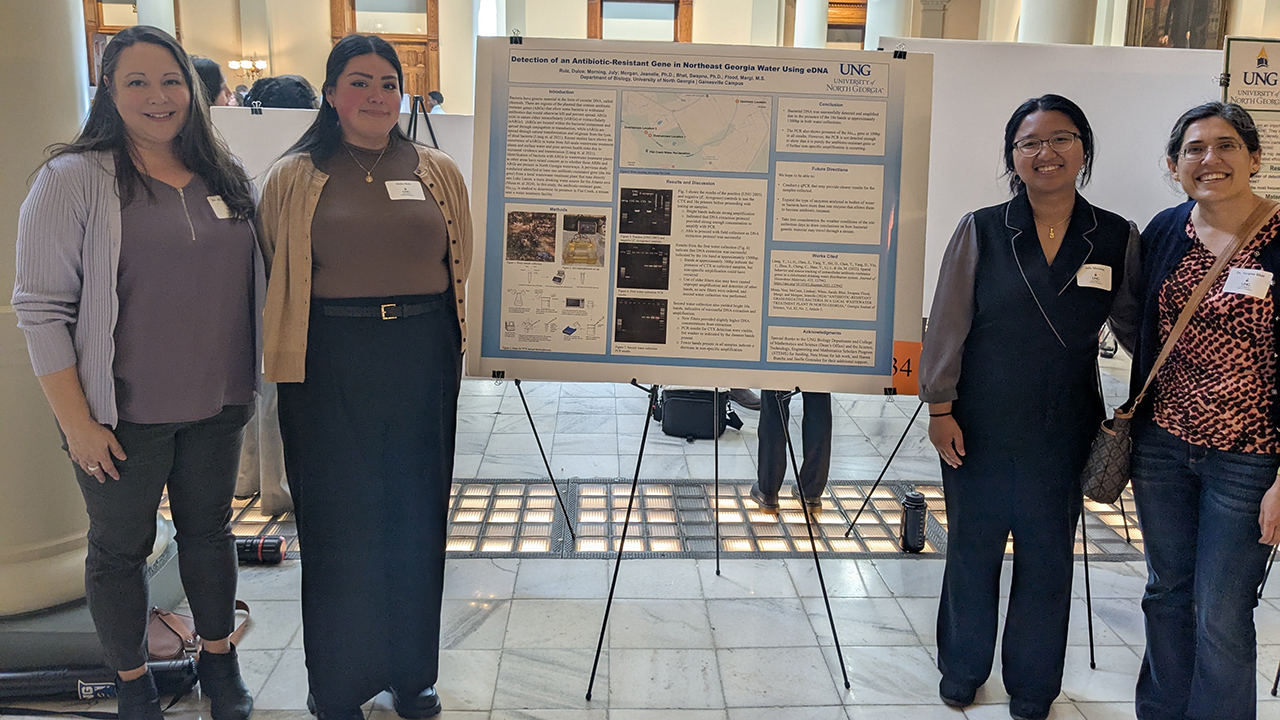Rare corpse flower blooms at UNG

Article By: Staff
More than nine years ago, Dr. Ashlee McCaskill was surprised to find that she could buy a very rare titan arum corm from a nursery in North Carolina, especially since they were not sold commercially. She planted it during the 2010-11 academic year in the greenhouse on UNG's Dahlonega Campus.
"The titan arum is known for having the biggest inflorescence (flower structure) in the plant world," said McCaskill, a professor of biology at UNG. "It's right up there with the giant redwoods in northern California in terms of botanical record-holders."
Commonly called the corpse flower, the plant has three unusual characteristics. The inflorescence grows between 6 and 8 feet tall, takes eight to 10 years to bloom for the first time and smells like rotting meat once it blooms. After its first bloom, it takes an average two to four years to bloom again.
| Transcript |
McCaskill purchased the plant along with others for two reasons: to use as a teaching tool for her students and build a collection in the greenhouse.
"I wanted to have some really charismatic plants that would pique students curiosity and convince them that plants are really cool," she said. "They aren't exposed to a lot of plants, especially exotic ones like the titan arum."
In late April, McCaskill got an unexpected surprise. The corpse flower, named Carol by UNG faculty, showed signs of blooming for the first time in early May, and she would have a front-row seat to watch it.
"I was shocked it was happening so soon. I thought it would be several more years," McCaskill said. "I am just in such anticipation for the bloom. I have been waiting for this for eight years."
Her excitement, though, was coupled with disappointment. UNG students, faculty and staff as well as area plant enthusiasts cannot watch this momentous event unfurl because of the COVID-19 pandemic.
"I was planning to have a blooming party, but now that's not possible," McCaskill said, explaining the last corpse plant to bloom in Georgia was 20 years ago at the Atlanta Botanical Garden.
The last corpse flower to bloom in the United States was in March 2020 in Minnesota. Most corpse plants in the United States are grown in botanic gardens or at colleges and universities since they only grow in nature on the island of Sumatra in Indonesia.
"Their habitat in Sumatra is being destroyed, so they are now listed as 'endangered' by the scientific body that monitors plant species populations," McCaskill said.
Therefore, the UNG faculty member and staffers would not let this important occasion pass without sharing it with others. The blooming was be recorded and shared with local media as well as other educators throughout the region. McCaskill would also conduct a Facebook Live question-and-answer session while Carol is in bloom.
To participate in the extraordinary virtual experience, visit UNG's Facebook page at 10 a.m. Saturday, May 9.
In case you missed it, you can watch the recording of the Facebook Live presentation, or see the time-lapse video of Carol blooming.



